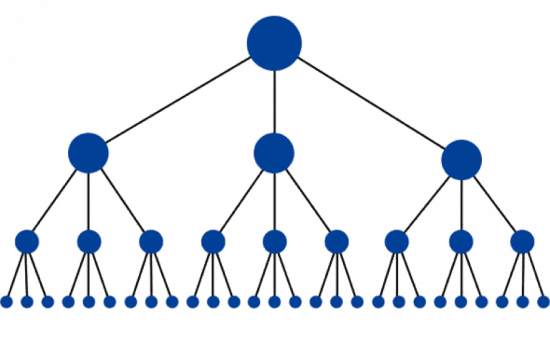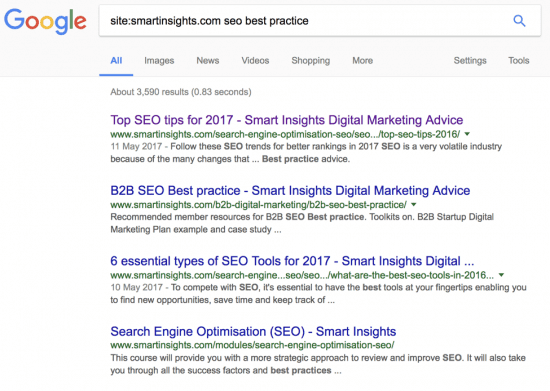Internal links are important for ranking high on search engines
As a lanky teenager, basketball was always my sport of choice at school; I scored three pointers for fun, towering above my classmates to effortlessly send the ball sailing into the net. (Or at least that’s how I like to remember the pinnacle of my sporting achievements.)
Now, as a seasoned SEO professional, I’m reminded of my days shooting hoops when I come across websites that neglect to build internal links. It may sound a strange analogy, but hear me out.

Placing an internal link from one page to another is like a free throw, a simple chance to score points unopposed. Links give you a chance to direct website visitors to related content, while, in the background, they also point search engine bots in the direction of your most important pages, increasing the likelihood of them ranking highly in organic search.
Thus, failing to link is like repeatedly fluffing your free throws.
You may very well have a detailed content marketing strategy in place, and be prolific in terms of writing insightful blog posts and compelling sales copy, but a lack of internal links will ultimately hamper your user experience and harm SEO.
Firstly, not linking between pages can make the customer journey somewhat frustrating and unfulfilling, limiting the chances of people browsing your website and truly engaging with your content. Naturally linking from within your content to closely related pages helps readers dig deeper into your website, pushing prospects down the pipeline towards becoming customers.
Additionally, when people click from link to link and read several pages, your bounce rate (the percentage of users immediately navigating away from your site) will significantly reduce, indicating you have valuable resources that people enjoy - a sign that is unlikely to go unnoticed by canny search bots tasked with displaying the very best content at the top of the SERPs (Search Engine Result Pages).
As such, your domain’s authority will gradually rise, and the overall health and visibility of your site will substantially improve, giving you the very best opportunity to drum up sales.
Website architecture
If you want your content to be efficiently indexed by Google, the pathway must be clear for search bots to crawl your website with ease. Isolated pages which aren’t linked to or from will be left stranded, the bots are likely to be unaware of their existence, despite how brilliant the content may be.
Moz’s framework for internal links outlines the perfect web design, with the biggest blue dot symbolizing your home page:

A clearly defined linking structure, as depicted above, helps ensure Google can understand and rank your webpages, every link representing a ‘signpost’ that directs them to closely-related, valuable content. The greater number of signposts you have highlighting important pages, the easier crawling becomes and the better your chances of converting customers will be.
Be strict about ensuring your most profitable and important pages have more internal links aimed their way, and it’s also imperative to safeguard against broken links, which is a negative SEO signal that frustrate users and crawlers alike. You should regularly review your Internal Links Report via Google Search Console, giving clarity on how the bots are crawling your site and where improvements can be made.
Linking it all together
From the outset of brainstorming blog posts or freshening up my service pages, I always audit my site to look for linking opportunities. One of the most efficient ways I do this is using the site colon (site:) search operator.
For instance, seeing as I’m discussing SEO best practice here, it makes sense to link to related posts on the Smart Insights blog. Typing “site:smartinsights.com seo best practice” into Google brings up over 3,000 related pages, as shown below.

As you can see, Top SEO tips for 2017 is the most authoritative internal source - the perfect link seeing as it’s a high-quality post packed with practical, up-to-date advice on the broader topic of SEO, of which I’m only discussing one aspect in this article.
Thus, it becomes a natural link that benefits the user experience and also reasserts the target page’s importance from a search perspective, giving it another ‘vote’ to ensure it ranks highly.
Anchor management
You should also be mindful of your anchor text (wording of your links) as this is another SEO signal that influences search results. High-quality anchors are descriptive and contain variation on keywords and phrases.
For example, “click here” is nowhere near as powerful a signal as “SEO tools to boost search rankings”. The former would give little clue as to what we’re actually linking to, whereas the latter is much more illuminating, containing both the phrases “SEO tools” and “boost search rankings”. These signals denote exactly what users can expect, while also giving the bots a heads up as to which topics the content of the page we’ve linked to is likely to cover.
One word of caution would be to not go overboard and plaster links all over your site, as this would quickly get messy, look spammy and be generally off-putting, while also not being very helpful in the pursuit of focusing on the promotion your key pages.
Ultimately, internal links help the ’link juice’ flow, ensuring your most important pages benefit in the background (from an SEO perspective) while also encouraging site visitors to click-through. Regularly producing quality content is key to success, and linking everything together will help you slam dunk the SERPs.
Thanks to Magnus Linklater for sharing their advice and opinion in this post. Magnus is MD of
Bespoke Digital, a Bristol-based Content Marketing and Digital PR Agency, helping B2B firms boost their search visibility with fully-integrated SEO and content strategy.







